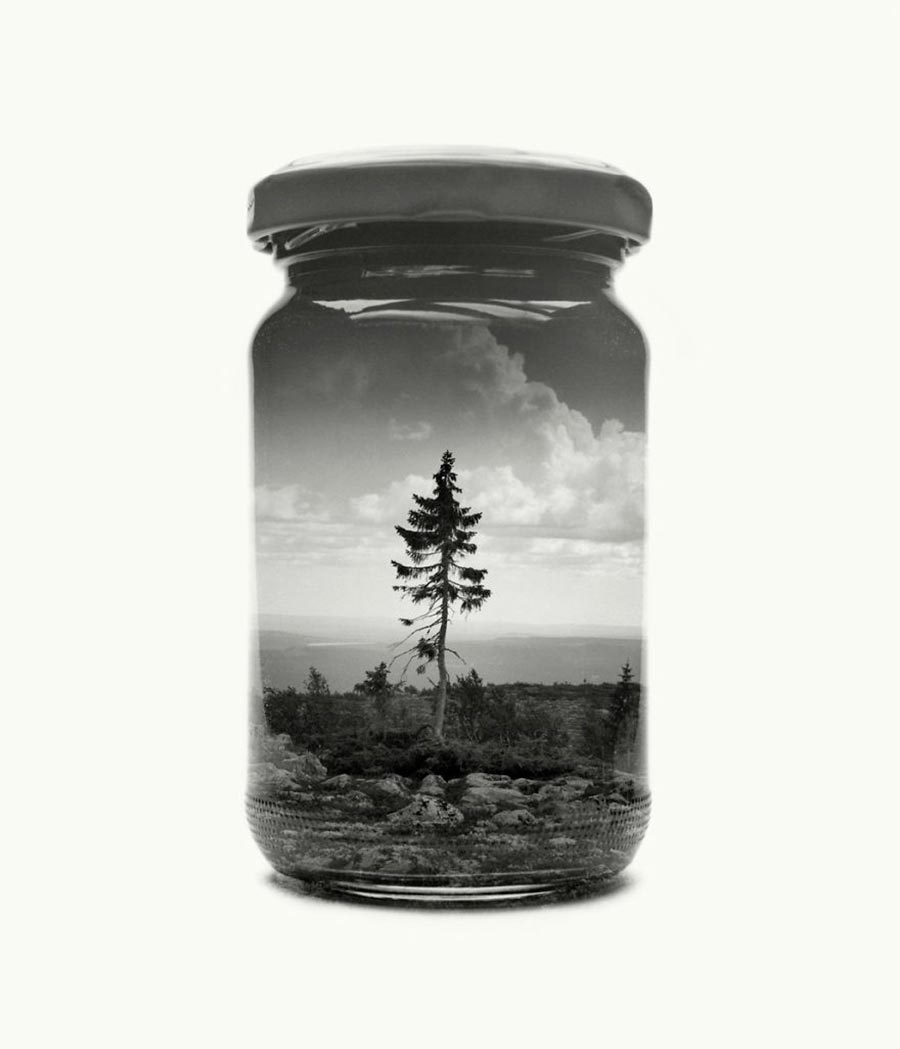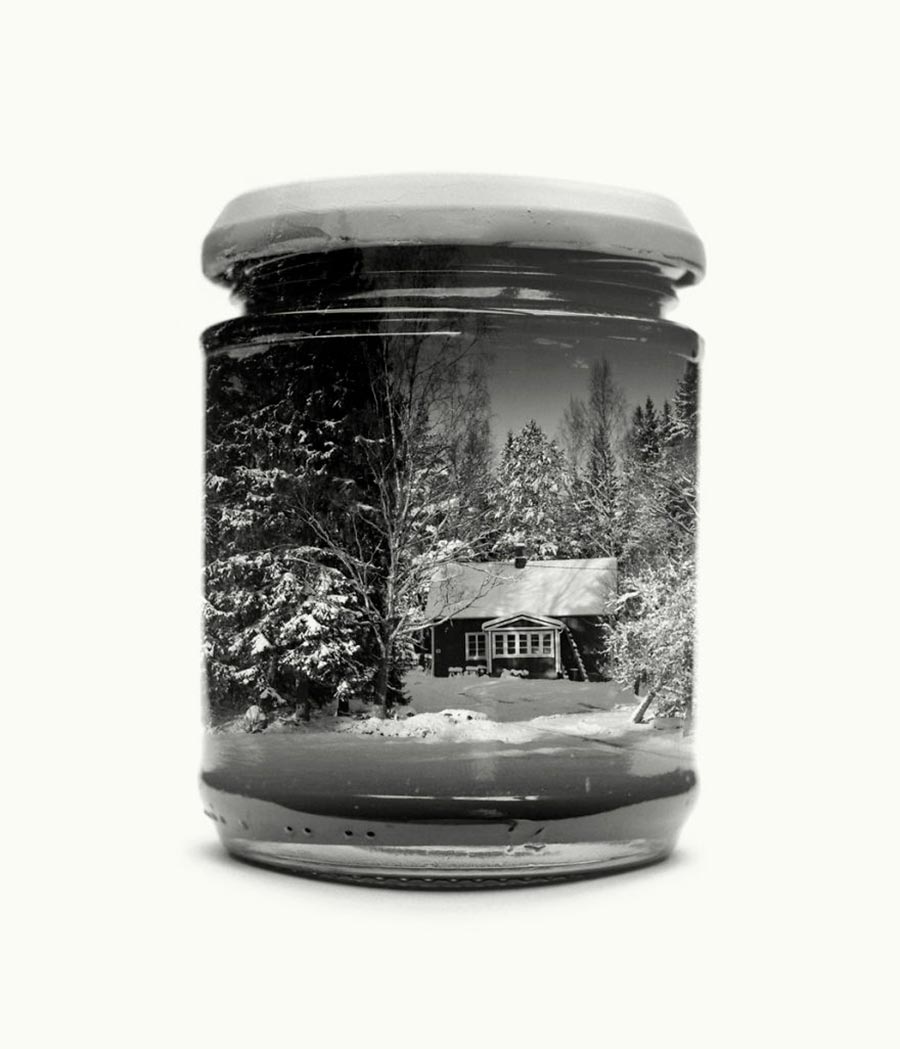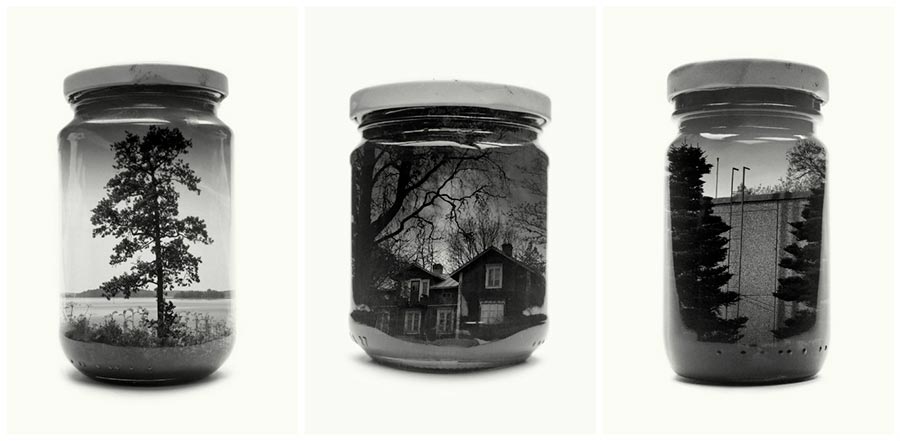Jarred and Displaced: Interview with Christoffer Relander
Just when you thought you can’t possibly experiment more with photography, an innovative artist proves you wrong. Christoffer Relander captures landscapes in jars. No, he doesn’t use Photoshop or any other software, instead he has pushed the boundaries of what is possible with analogue photography.
Using the double exposure technique, the photographer paints the jars black, shoots them against a white background and ventures out to find his second shot. It’s not an easy process, but the results speak for themselves. Deeply rooted in Christoffer’s early memories, the landscapes are reminiscent of his childhood spent on the countryside in the south of Finland.
Christoffer takes us back to all our childhoods, when the wonders of the world were all around us. A time when fascination with nature was like a pool for inspiration. We could step outside and busy ourselves all day; we appreciated nature for what it was – welcoming, comforting and most of all fun. The works are presented as bottled up memories in a project called ‘Jarred and Displaced’.

Image credit: Christoffer Relander
Could you tell me about the process of creation for these jars?
It’s a slow process as it’s shot on medium-format film, manipulated in-camera. This means I have to respool my film manually after each bottle I shoot. I store my exposed film in that bottle until I find a landscape/environment to expose into this shape of a bottle. Now it’s more of a routine, but started very challenging. Sometimes I wonder how I lasted through the trial and error.
What inspired you to create this project?
I’m not really sure. I shoot a lot of very experimental images without much expectations; images I don’t plan to show to anyone. It’s relaxing and rewarding to me as I usually learn something by doing through experimentation. Ideas to a new body of work can develop from a mistake and a technique. Jarred & Displaced is very technical and it wouldn’t have been made if I hadn’t been as experimental. The idea for Jarred & Displaced started to grow at the time I found out I would become father. I felt nostalgic and a bit anxious to realise my own childhood now felt so far away.

Image credit: Christoffer Relander
Is there an underlying message you’re trying to communicate with this project?
I wanted to create a personal collection of jarred childhood environments that are meaningful to me. Later I realised it might be worth sharing. I do also care about our changing environments, therefor it’s been enjoyable to play with the idea of preserving some of our threatened nature. It’s a childish idea that again takes me back to my childhood.
What is it about nature that inspires you the most?
I grew up on the countryside and been surrounded by nature for most part of my life. This is where I go if I need to collect oneself. I just cannot get inspired in a studio environment. I think what interest most people about nature is ourself—we tend to search for patterns or symbols that reminds us of who we are. As philosopher Alan Watts said, “We don’t come into the world, we come out of it.” Nature re-connects us to our primal origins.

Image credit: Christoffer Relander
What are some themes you plan to explore in the future?
Something like this I think: more childhood, extraordinary light and pointless abstracts.
What are your thoughts on the future of digital photography?
There are good and bads. The digital system is very comfortable, easy to use and there are affordable options too. We can easily shoot 500 images a day, which is neither easy nor affordable on film. One of the reasons I started to shoot more film is to slow down. The digital system is forgiving, it’s easy to just “spray and pray”, preview images every five second. When shooting on film I shoot less and focus more. While waiting to develop my film I only have my imagination to picture what it will look like. Digital photography never reached this level of excitement to me.






